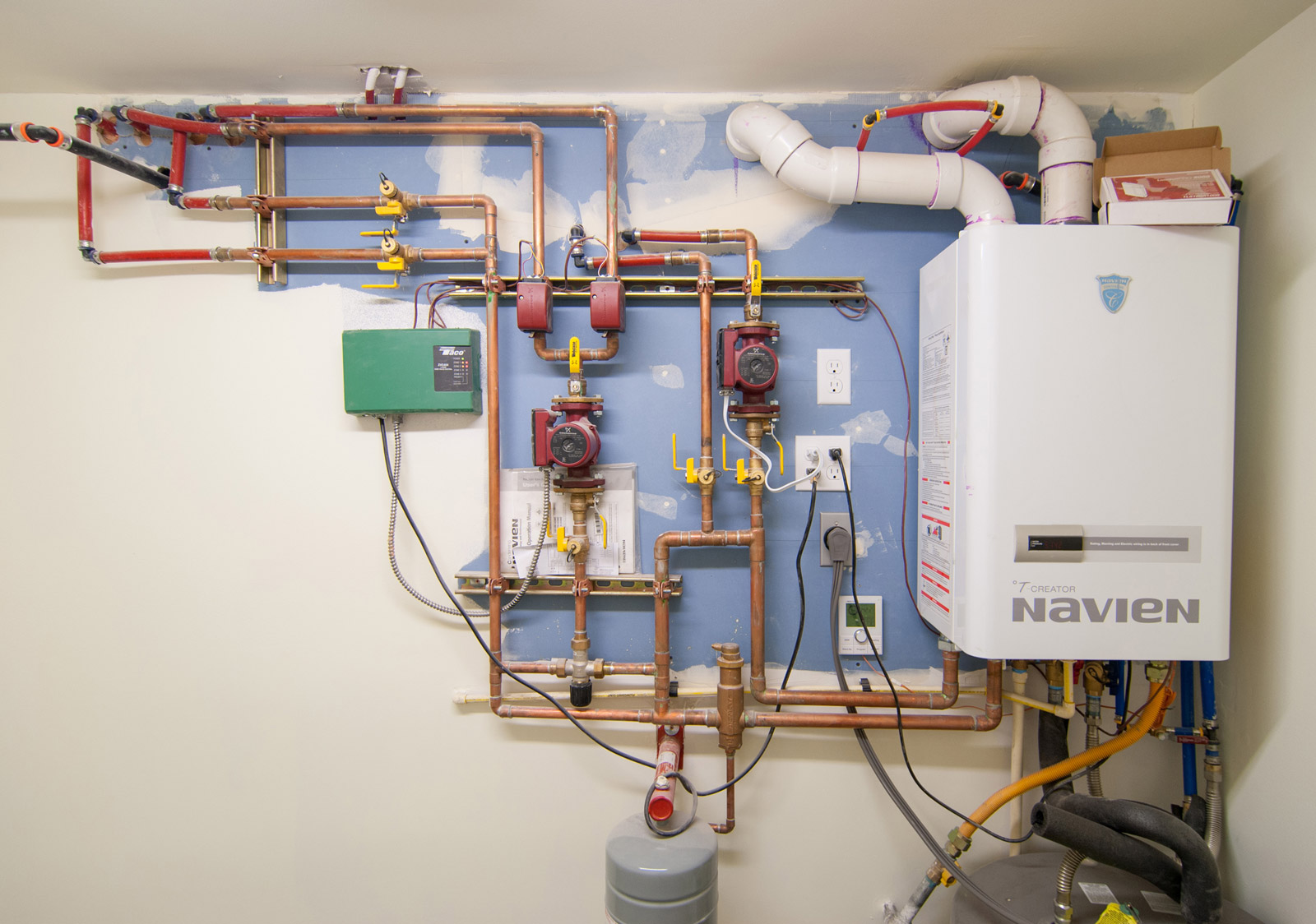
[Images by BUILD LLC]
The Heating, Ventilating, and Air Conditioning (HVAC) system of a residence is one of the most important components to select early in the design process. The solution depends heavily on where the home is located regionally and locally, as well as the specific desires of the inhabitants. The result between a thoughtful system and an undiscerning one can be the difference between comfort and misery during temperature extremes, while making decisions about the type of HVAC system during construction can be costly and adversely affect the design of the home. Today’s post is part technical guide and part professional advice focused on the Pacific Northwest climate zone. It’s also exactly what we tell our clients about the three most important HVAC systems here in the PNW — radiant, whole house forced air, and the mini-split system.
RADIANT HEAT SYSTEMS
Radiant heat is, in our opinion, the most comfortable way to heat a home in the northwest, offering only two drawbacks (more on that in a moment). Not only does radiant heat feel great underfoot, but it provides a consistency of heat/humidity control in our damp environment. For a home, we typically install this in the concrete slab, including a loose (as in less dense) loop in the garage for a trickle of heat to dry out gear or provide heat for shop use, and then use the staple-up method for installing tubing to the underside of the structural sheathing at the remaining floors.

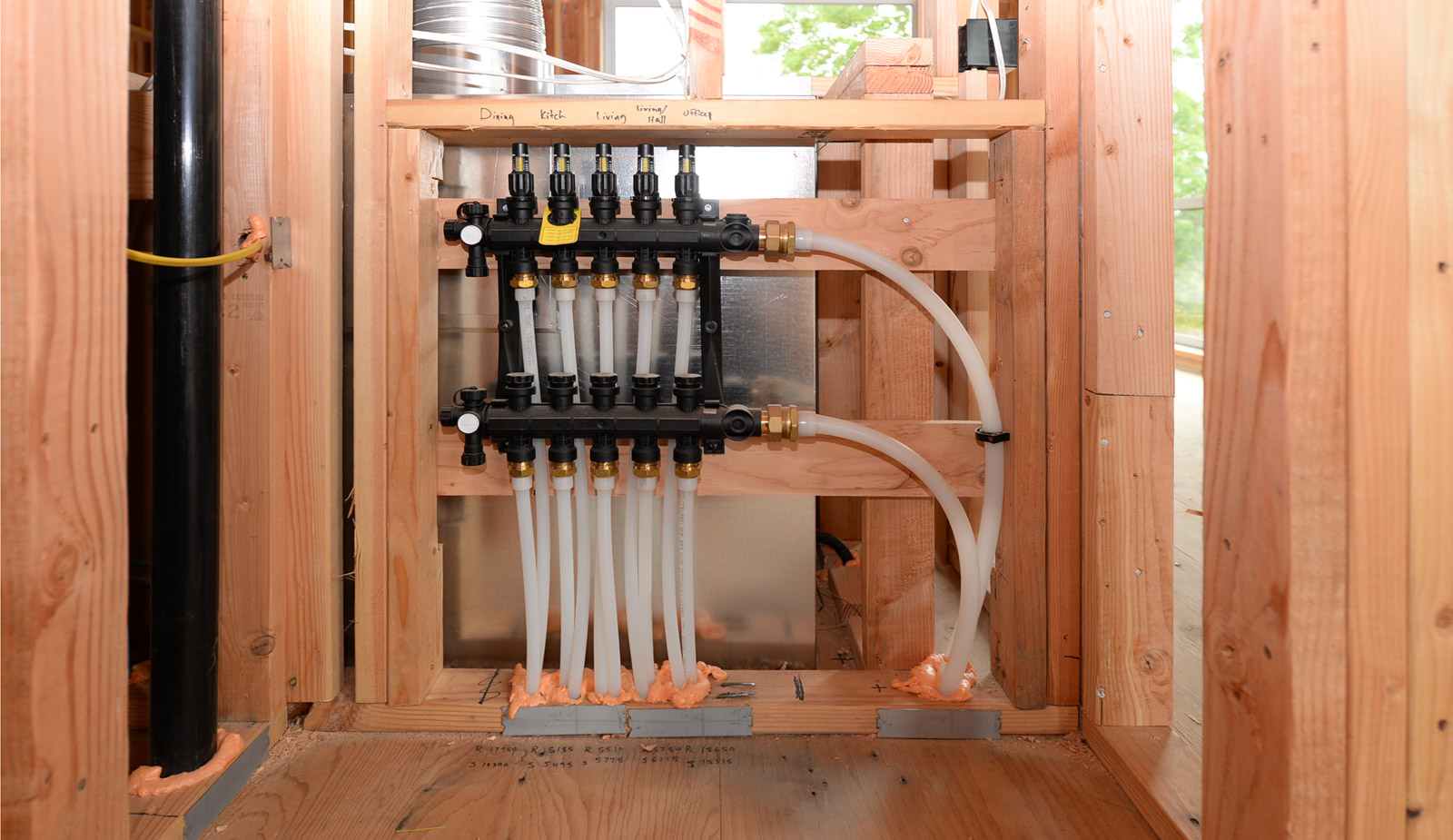
In the case of a major remodel, we may even consider removing a basement slab in its entirety, not just the portions needed for plumbing and structural, so that insulation and radiant tubing can be installed throughout. If height allows, it’s also possible, and more cost-effective, to insulate over the top of an existing slab, then install a new slab with radiant heat. If radiant is chosen as the heating system for a remodel, it’s often worth the cost of a new slab to capture the basement slab as part of the system, as the thermal mass helps to heat the entire house.
The staple-up technique at framing works well despite not having much thermal mass to heat. The floor won’t be too hot underfoot, but there is enough heat generated to keep the floor comfortable and the spaces heated. The only times we’ve run into issues with this system are with large volumes of space on really cold days, which causes just a small dip in the system performance and heating output.

It’s worth noting that the decision to use radiant heat influences the floor finish selection. For hardwood flooring, we would recommend using rift and quarter-sawn oak, as in the CSH2014 below, since it’s the only hardwood we’ve found to be stable enough over radiant heat. Otherwise, engineered hardwood floors need to be considered. Despite the stability claims on the internet of all sorts of different floors over radiant heat, we recommend being vigilant with this material selection. Despite popular belief, we’ve found bamboo to be a particularly poor material choice over radiant heat. In short, radiant does limit the wood flooring options, but we’ve found plenty of variety to put an interior palette together despite this.
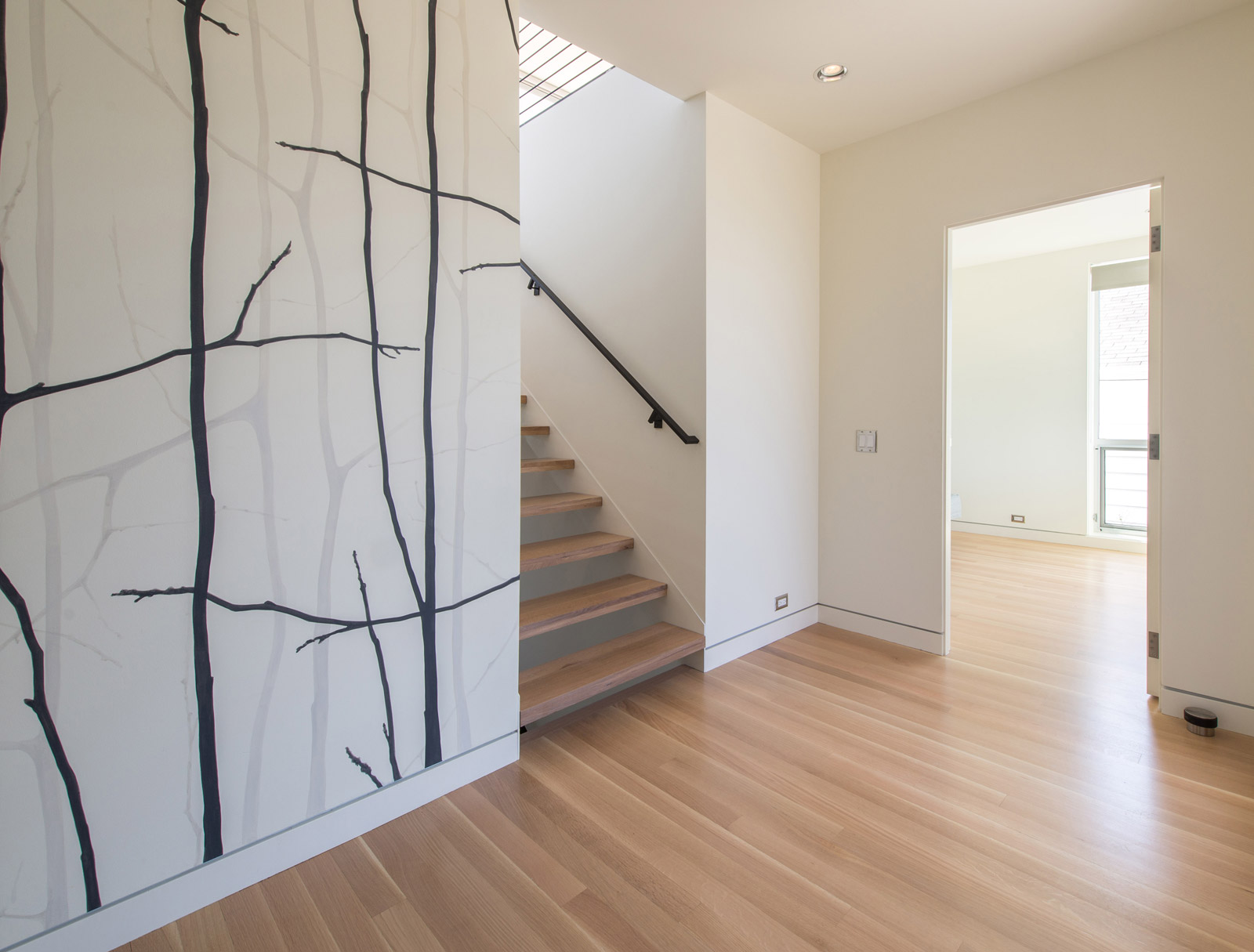
The Drawbacks
There are two primary drawbacks of radiant floor heat. The first is that a radiant system doesn’t allow for any type of cooling, so if that is desired, the cooling needs to be a supplementary system (which is an extra cost for another system). Second, radiant response time is slow, just given the basic physics. If the sun comes out in the winter and cooks the house, the radiant heat system will get the signal to shut-off, but the slab and floor mass that were already heated continue to provide radiant heat for some time. We’ve found that this can be easily negated by cracking open a few windows to allow cool air in, but it needs to be noted that radiant is not instant in the way forced air is. And reversely, once the sun and associated thermal gain disappear, the radiant takes some time to re-fire and heat up slab/floors, so there is a little lag time in the heat returning. We’ve found that this can take some getting used to, but there are some actions that can be taken and subtle shifts in the set temperature to help minimize the lag time.
Additional Considerations
Radiant heat systems have a few additional considerations worth mentioning. Since radiant doesn’t have any type of inherent air handling, each home requires some method of providing fresh air and air circulation. Our go-to approach has been the installation of Passive Air Inlets (PAIs) in all habitable rooms. We also usually turn the laundry area fan into a whole house fan with a timer programmed to pull air through the home a number of times a day (typically about 12 hours each 24 hour period).
There are other options to consider including Heat Recovery Ventilators (HRV) that can be used, but we find that the extra few thousand dollars is typically not something clients want to spend when the simple PAI system can be used. Plus, bath fans can always be run for supplementary venting and, as low tech as it is, windows can always be opened since it seems like each individual has different sensitivities to interior temperature and perception of fresh air.
For radiant controls, we’ve generally leaned toward simplifying. The sky seems to be the limit on controls using outdoor air sensors and heat exchangers and the like, but we’ve found that dividing a home into a few thermostatic zones, and then using the ball-valves in the manifolds to direct volume of heat to be remarkably effective. In the case of the CSH2014, the thermostatic zones are the basement/garage, the master suite/small guest room on the second floor, the kids rooms/ bathroom on the second floor and the upper floor (one open volume). From there, the manifolds are used to control and direct heat. Using the middle floor as an example, the manifold ball valves are adjusted to provide maximum heat to the bathrooms, and then the northern facing kids room adjusted for a little less heat and the southern facing kids room adjusted for even less heat. It’s a simple but effective method.
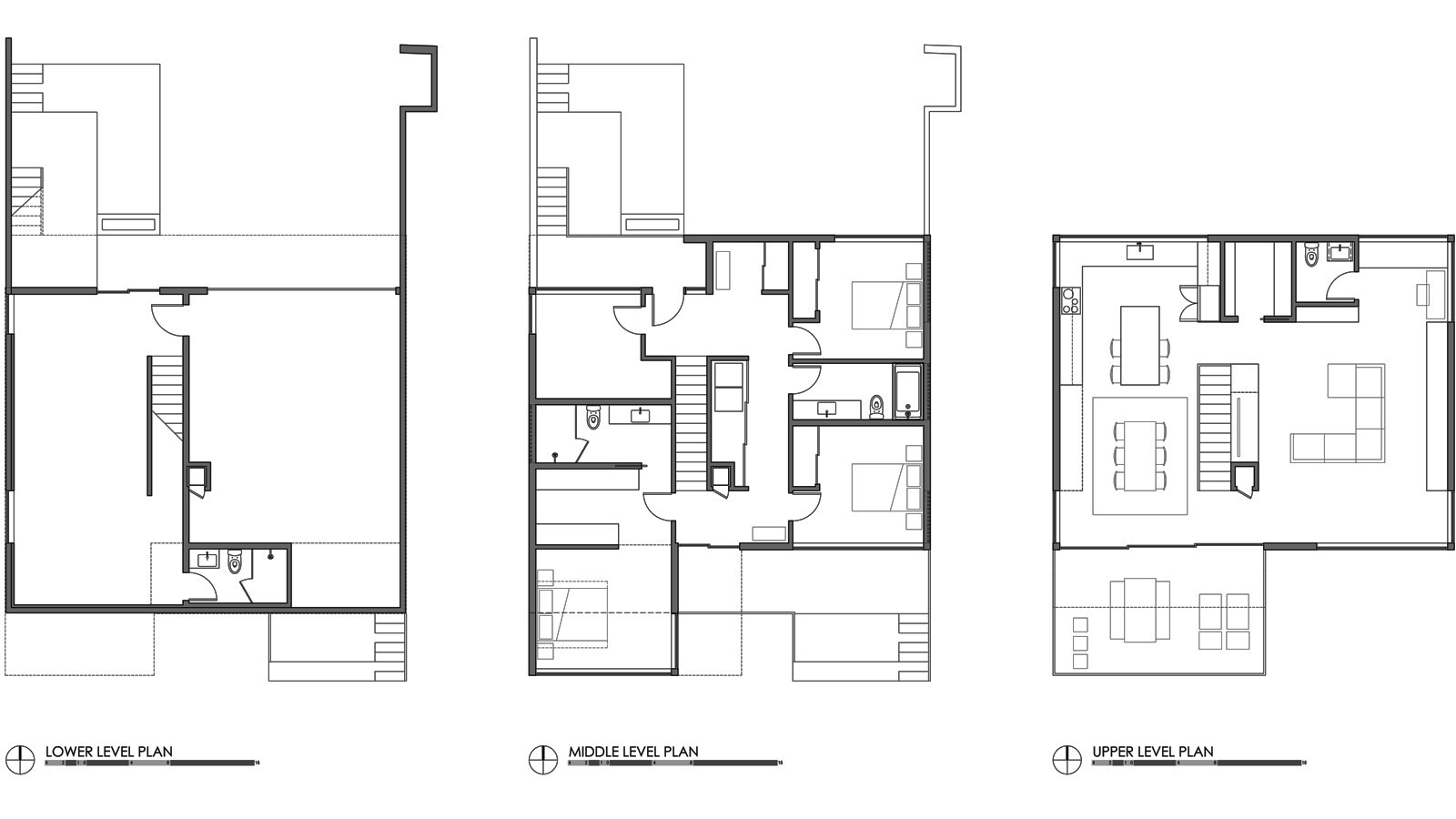
For the radiant system gear, there are also many approaches. In smaller homes, a high capacity hot water heater can be used to provide the heated water for radiant tubing. In medium sized homes, a high capacity hot water heater, along with a heat exchanger, can be used so that the hot water heater provides all the domestic hot water (sinks, showers) while also firing the radiant tubing, without the domestic water mixing with the radiant tubing water. Potential mixing is a big no-no on many levels. In larger homes, typically two different systems are used for the domestic hot water and radiant heated water. There are all kinds of options here, and a topic best discussed with the mechanical sub-contractor on a project.

Lastly, although the term “boiler” is often thrown around, boilers want to be avoided as they require special permits and annual testing. In many jurisdictions, 200,000 BTU is the technical threshold where a hot water heater becomes a boiler.
WHOLE HOUSE FORCED AIR SYSTEMS
For whole house forced air, there are a couple of options to consider. If heating and cooling are desired, a heat pump system is required (condensing unit at the exterior and an air handler at the interior).
Without the cooling component, (heat only,) an interior-only type furnace system can be used. The old-school system was to have a single thermostat, in the main living area, and use the registers in each room to control volume of air to each room. This is pretty low-tech, but in homes without a huge variation of thermal gain, large expanses of glass, or other factors, this method works. With BUILD designs and their generous amounts of glazing, we find that the systems require more control.
The next level of control is to have zones for each floor, which requires ducting for each floor. Depending on home lay-out, this can range from relatively easy to extremely difficult to install, depending on the location of the interior furnace/air handler and supply ducting with related return air pathway to each floor. In the case of a two-story residence with a basement, supplying the basement as a zone and the upstairs as a second zone would be generally straightforward.
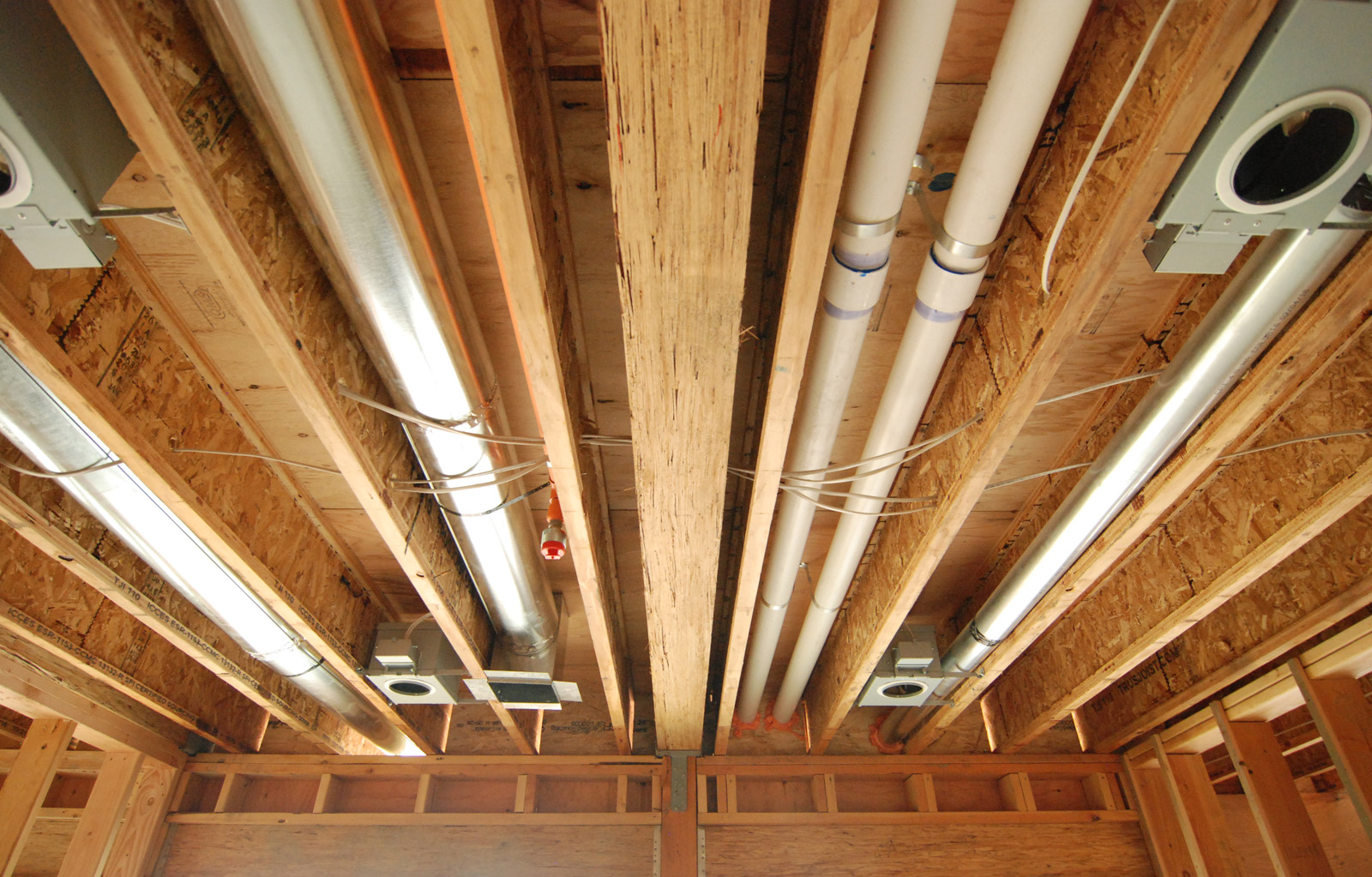
The Drawbacks
Forced air, be it warm or cool, requires ducts, and ducts require long runs of unobstructed space. When thoughtfully designed ahead of time, adequate ducting can be designed into joist bays, walls, or concealed cavities within the home. In challenging situations, soffits are often necessary — especially in basements where maintaining the head-height is often desirable. With the proper floor to ceiling height in a basement (7’-6” or taller), soffits can typically be incorporated without having much of an adverse effect on the basement use or aesthetics.

Additional Considerations
Further control can be achieved with a forced air system and only one system of ductwork, with technology like the very slick Emme pneumatic dampers. This system allows for each room to be individually controlled by using pneumatic air bags to act as dampers in the ductwork to direct air volume (heating or cooling) to the exact location it is needed. It also has some learning functions that include using unwanted hot or cold air from one location and directing it to another. We’ve installed this in existing ductwork as well as new ductwork with great results. Depending on the location and scope, the upgrade cost from a basic single-ducted system to this level of control can be as much as $10K, but the level of performance and control over time has left homeowners very satisfied.
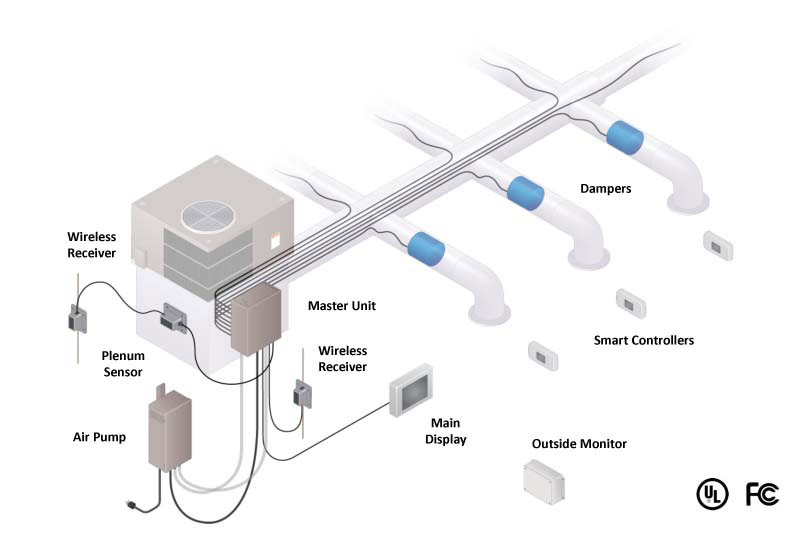
[Image via Emme]
Lastly, in homes that have limited pathways for ductwork, a high-velocity system may be a good option. We implemented this system on the Desai Residence, which had very special considerations: a four-story home that was not amenable to soffits and the design provided few pathways for ducting given the structural system. Although the system took some significant set-up time to get it functioning smoothly, (relying on more specialized controls,) once it was set up, it performed really well. This is a specialty system that isn’t needed on most homes, but more information can be found here.
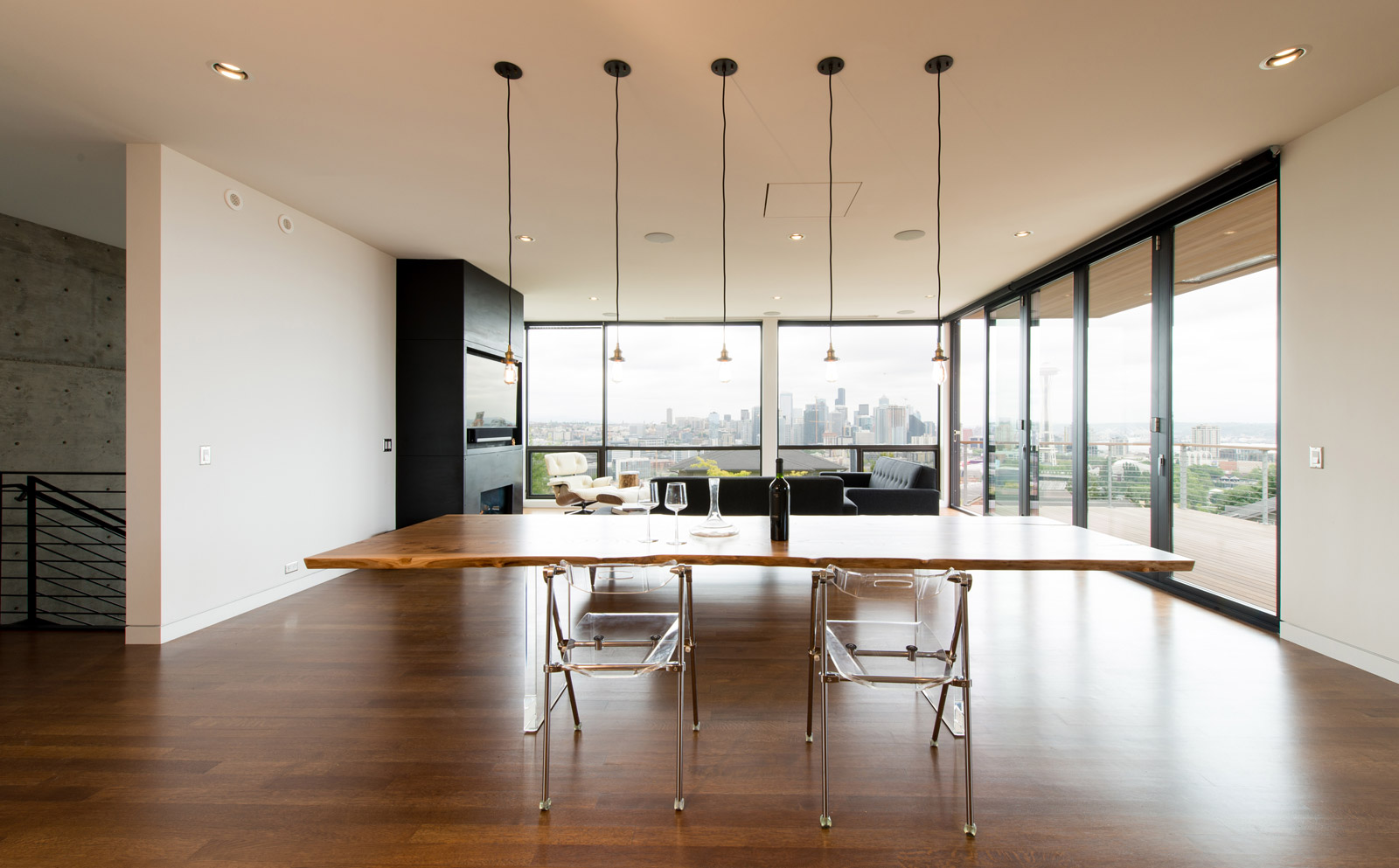
MINI-SPLIT SYSTEMS
The mini-split systems use an exterior heat pump system similar, in basic approach, to more traditional heat pumps. The difference is that instead of the exterior unit running a line-set to a single source air handler, it runs line-sets to any number of interior air handlers. These are typically mounted in specific rooms which allow for each of those rooms to be on a separate thermostat for individualized control. We’ve found that these can be a great supplement to a radiant heat system as specific rooms, say the living/kitchen/dining or master suite, can have this secondary system for heating/cooling. We’ve had good results with these on many projects including the Kirsch Residence and the Case Study House 2014.
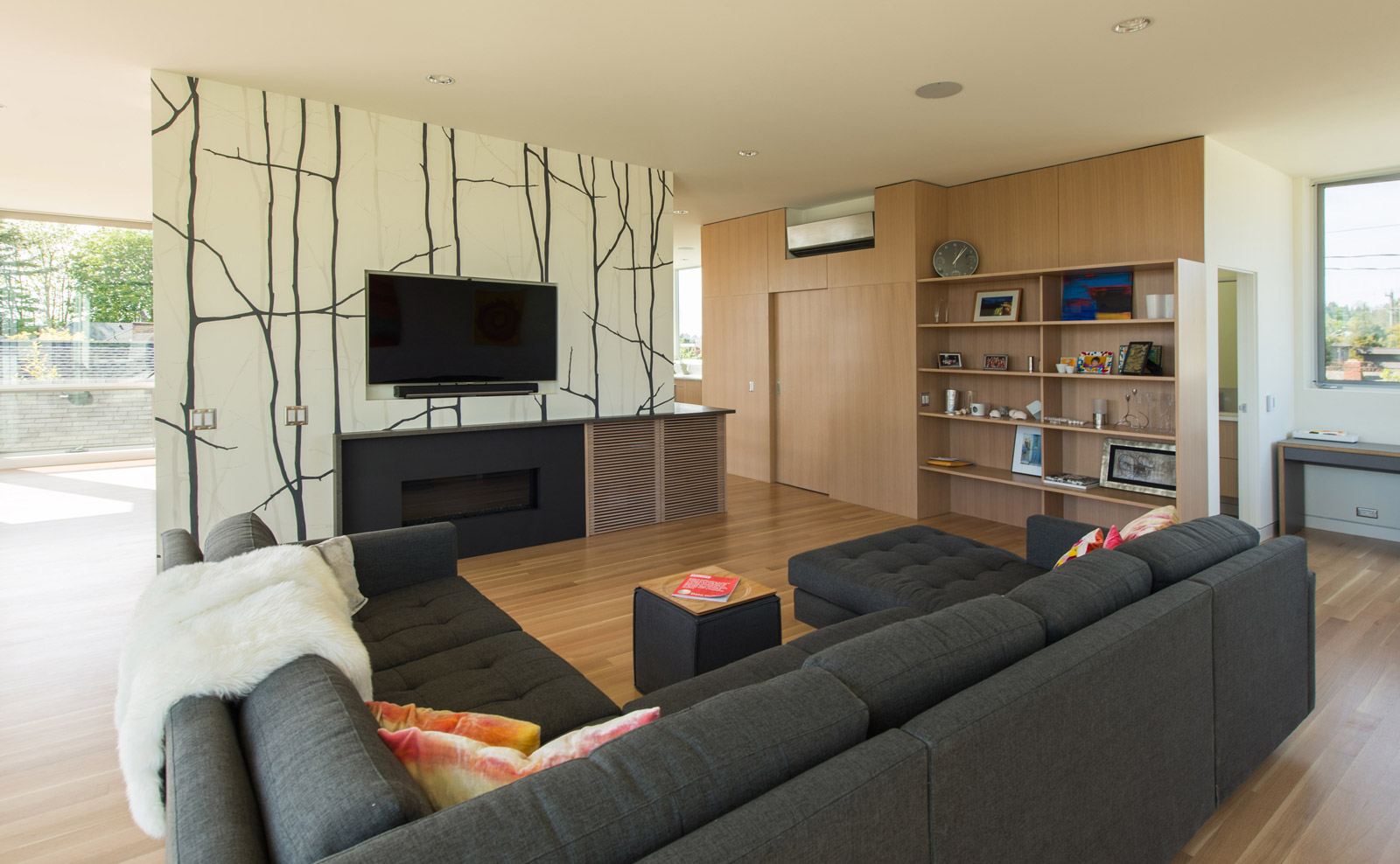
SECONDARY SYSTEMS
Now that we’ve explained the three primary HVAC systems we use on our projects, it’s worth discussing a couple of secondary systems for more of an individual room approach to heating. When we don’t install full home radiant due to other considerations, we typically install under-tile electrically-driven heat mats in bathrooms. These have a programmable thermostat and are great since they heat up relatively quickly (less than an hour) so they can be programmed to fire early in the morning and shut off at night. And some years ago, we found a wrapped wire that could be installed in wet locations so these can be run into the shower pan also. It’s a great system that can typically be added to any new bathroom for under $1,500. And in the case of clients where one person really likes extra heat (in a personal office or other), we’ve installed these cove heaters as a supplementary heat source.
OTHER (LESS EFFECTIVE) SYSTEMS
And of course, there is geothermal, one of the darlings of dinner party conversations. We haven’t looked at this system in a few years since the upfront costs were extremely high and the payback registered in multiple decades. Though wonderful in theory, geothermal is difficult to pencil out, particularly for residential projects. Many sources out there point to basic pros and cons, and additional info can be found here and here.
FUEL CONSIDERATIONS
A consideration in all systems is fuel source. The mini-split system, by nature, is powered with electricity. The heat pump and furnace can be natural gas/propane or electric. Radiant heat generally wants to be fired by natural gas/propane since it is driven by heated water. Radiant systems driven by an electric hot water heater/boiler tend to have really high operating costs as they’re electricity hogs.
HVAC DETAILS
We typically put domestic hot water heaters on a recirculation pump system, with a switched outlet so that they can be timed off at night. With the hot water lines constantly charged with hot water, the speed of hot water to the faucet is greatly improved.
DISCLAIMERS
It’s worth mentioning that every residence is different and every site is unique. The GC and mechanical subcontractor on a project will have a wealth of information based on their own experiences and past projects that may differ from ours. As with most things, hire good people and trust their advice.
That does it for our HVAC coverage for now. If you’ve made it through all of this, we’re pretty sure we owe you a BUILD T-shirt or coffee mug or something.
Cheers from Team BUILD





